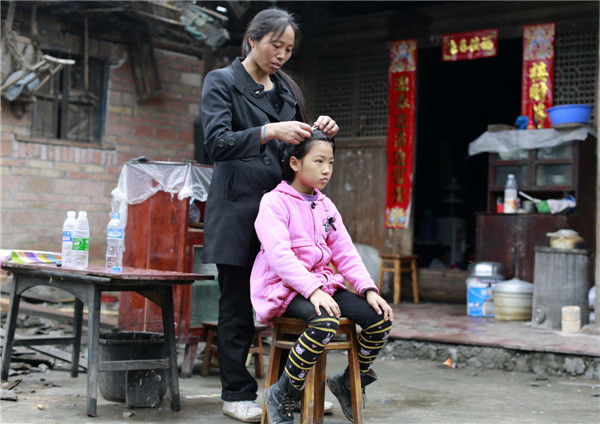Disaster: Self help and survival
Updated: 2013-04-25 07:30
By Hu Yongqi in Ya'an, Sichuan, and He Na and Jiang Xueqing in Beijing (China Daily)
|
|||||||||||
Low level of awareness
Disaster relief work relies mainly on officials from the village government and members of the Communist Party of China, according to Zhang Zhirong.
The modus operandi is as follows: First, the officials search each household to see if anyone is injured. Then they lead the uninjured villagers to help the wounded, while also reporting to the higher level of government to seek more help. When professional rescue teams arrive, local officials brief them about the village and show them the way around.
In the wake of the 2008 quake, the Guangyuan municipal government ordered every village in the city to assign a communications officer who can report to the higher-level government - whether by phone or on foot - as soon as a natural disaster occurs.
The government has also held annual emergency response drills since 2008. The drills cover the city and the counties, towns and villages under its administration. Villagers are told about which routes they should take to escape danger during a variety of natural disasters, including earthquakes, mudslides and floods.
Lectures were held and brochures distributed to residents to improve their awareness of disaster prevention. For example, they were advised against building houses alongside watercourses, for fear of flooding, or in areas prone to landslides.
 |
|
Jiang Guoshu, 38, tends to her 8-year-old daughter Mu Xuerong in the aftermath of the earthquake. Photo by Feng Yongbin / China Daily |
However, even though it had been five years since the large major earthquake in Sichuan, the ability of most Chinese to help themselves and each other in the event of a natural disaster still remains at a low level, said Lyu Zhonghong, director of the Luye Rescue Team, a non-governmental volunteer organization based in Beijing, whose team traveled to Ya'an directly after the quake.
"Many survivors rushed back into their houses to save family members right after the earthquake without wearing a helmet or any other protective gear. We heard about one couple that originally escaped but were killed later when their house collapsed as they tried to save their children who were buried inside. It's really sad," he said.
|
 |
Although the Luye Rescue Team has provided seminars on emergency response and first aid to more than 100,000 people in Beijing and at 100 universities nationwide, the proportion of the population covered by training such as this is still far from adequate, especially at the community level, according to Lyu.
He suggested that every family should keep emergency response equipment and a first-aid kit at home. The kit should include items including protective gear such as helmets, emergency food supplies (biscuits, energy bars and bottled water), evacuation equipment such as ropes, a shovel and a hammer, as well as a whistle to attract attention and a radio to follow news of rescue attempts.
"Most people think that an earthquake will always strike someone else, not them," he said. "I haven't seen much change in terms of people's awareness of disaster prevention and self-protection during a natural disaster."
Related Stories
Classes resume in quake-hit zone 2013-04-25 02:18
General aviation firms offer quake relief help 2013-04-25 02:01
Li in plea to quake rescuers 2013-04-25 01:54
99% houses damaged by quake in township 2013-04-24 21:49
Classes to fully resume in quake-hit region 2013-04-24 19:28
Walking contest to donate for quake zone 2013-04-24 17:12
Today's Top News
Premier Li in plea to
quake rescuers
Xi meets former US heavyweights
Hollande's visit to open new chapter
China still top spot for Japanese companies
Nation sets sights on bigger carrier
Canada to return illegal assets
China deserves credit for rapid response to bird flu
Truck driver's organs save five lives in Wuhan
Hot Topics
Lunar probe , China growth forecasts, Emission rules get tougher, China seen through 'colored lens', International board,
Editor's Picks

|

|

|

|

|

|





